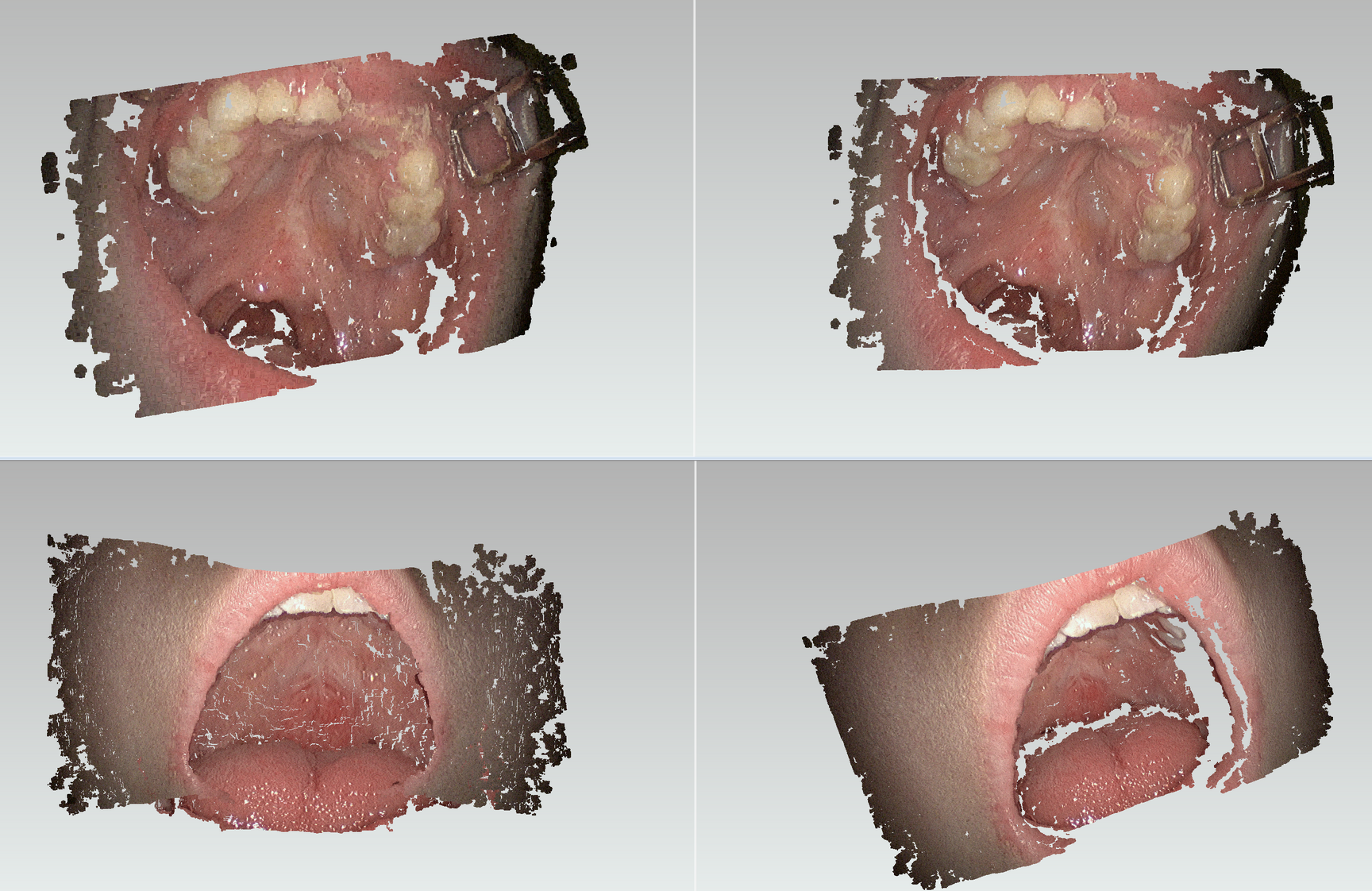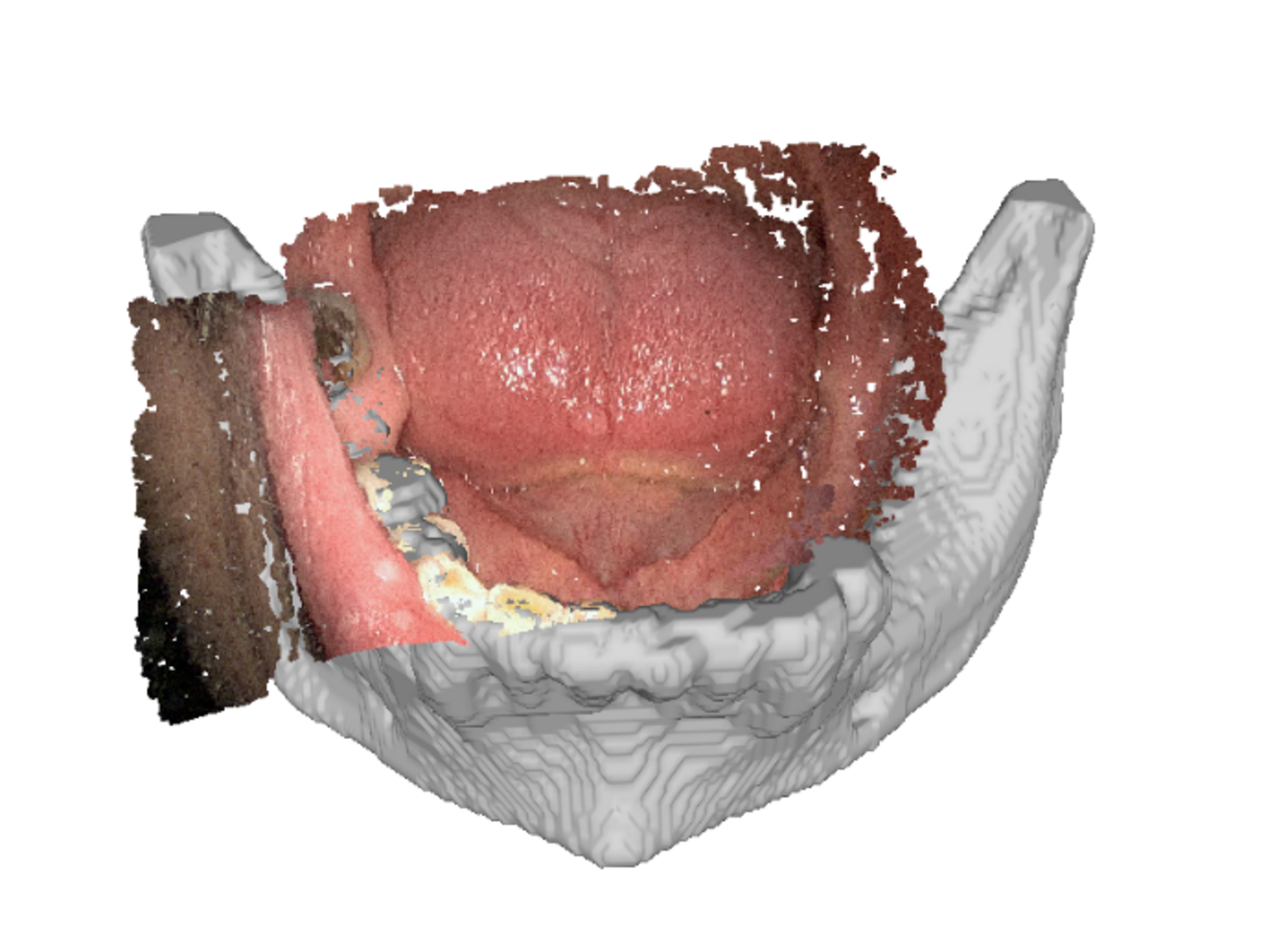Endoskopisches Scannen bei Lippen-Kiefer-Gaumen-Spalten für den 3D-Druck vom Gaumenplatten

Endoscopic scanning of orofacial clefts for 3D printing of palatal plates
Duration: April 2022 - March 2025
Project Partner
- Fraunhofer HHI
- University Hospital Dresden
- IFA3D Medical Solutions GmbH
- Portformance GmbH
Motivation
EndoScan3D addresses the clinical application field of orofacial cleft (OFC) in edentulous mouths of babies and small children, which is of great social importance. Failure to treat OFC leads to restrictions in breathing, speech development, hearing and generally in any form of food intake and results in aesthetically impairing facial dysmorphia. For OFC toddlers and babies, a so-called palatal plate is therefore taken in the oral cavity using a silicone impression under intensive medical care. The impression allows precise measurement and modeling of the specific anatomical features in order to be able to close the OFC by inserting a palatal plate. In addition, due to the rapid growth of children, the palatal plate must be replaced every 6-8 weeks so that this multi-layered, long-term therapy can be implemented sustainably and successfully and later enables linguistic and social participation in everyday life. In everyday clinical practice, there are many situations in which patient anatomies cannot be measured and accurately recorded or in which a risk assessment for the use of existing solutions is negative (e.g., radiation hygiene, anesthesia/morbidity risk).
The goal of this project is to replace and supplement existing measurement solutions in therapy and diagnosis with new low-risk, purely image-based procedures and, for the first time, allowing measurement applications in a clinical-medical context.
Objective
In contrast to the current stressful and risky intensive care procedure, the project will replace silicone impressions using a completely digital image-based scan processing chain with the aid of 2D/3D endoscopes. This approach can be performed on an outpatient basis, without contact or radiation, with low risk and at low cost and time. Furthermore, it is suitable for small internal structures such as the child's oral cavity, in contrast to state-of-the-art intraoral dental scanners with their relatively large scan heads.
EndoScan3D will serve as a proof-of-concept for the production of patient-specific restorations such as epitheses and implants from image-based 3D reconstruction procedures. The process will be transferred to other medical and technical areas with small internal structures and cavities.

Approach
The project implements a contactless image-based process, which generates a digital high-resolution 3D data set that will later be used for 3D printing. The patient-specific anatomy is modeled true to scale using triangulation methods. This process must be real-time capable so that the scanning process can be carried without anesthesia. Due to the image analysis algorithms, no additional extensions to the endoscope are required for the 3D capture of the oral cavity. Initially, we use stereoscopic endoscopes, and methods will be extended to monoscopic endoscopy data.

Publications
S. Beckmann, J.-C. Rosenthal, E. L. Wisotzky, A. Hilsamnn, P. Eisert,
Automatic Registration of Anatomical Structures of Stereo-Endoscopic Point Clouds.
Current Directions in Biomedical Engineering, 9(1):615-618, 2023. doi: https://doi.org/10.1515/cdbme-2023-1154
S. Lünse, E. L. Wisotzky, S. Beckmann, C. Paasch, R. Hunger, R. Mantke,
Technological advancements in surgical laparoscopy considering artificial intelligence: a survey among surgeons in Germany.
Langenbeck's Archives of Surgery, 408:405, 2023. doi: https://doi.org/10.1007/s00423-023-03134-6
J.-C. Rosenthal, E. L. Wisotzky, C. Matuschek, M. Hobl, A. Hilsmann, P. Eisert, F. C. Uecker,
Endoscopic measurement of nasal septum perforations.
HNO, 70(1):206-213, 2022. doi: https://doi.org/10.1007/s00106-021-01101-5
M. Allan, J. Mcleod, C. Wang, J.-C. Rosenthal, Z. Hu, N. Gard, P. Eisert, ... & S. Speidel,
Stereo correspondence and reconstruction of endoscopic data challenge.
arXiv preprint arXiv:2101.01133. 2021.
E. L. Wisotzky, J.-C. Rosenthal, U. Wege, A. Hilsmann, P. Eisert, F. C. Uecker,
Surgical Guidance for Removal of Cholesteatoma Using a Multispectral 3D-Endoscope.
Sensors 20(18):5334. 2020. doi: https://doi.org/10.3390/s20185334

EndoScan3D is funded by the Federal Ministry of Education and Research (BMBF).